Filter by
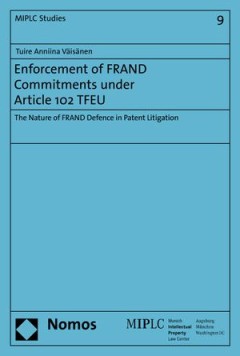
Enforcement of FRAND Commitments under Article 102 TFEU : The Nature of FRAND…
Defining the true meaning of the acronym FRAND reminds of the parable of two political parties arguing before the elections: who is right and who is wrong, although they both know that there is no such thing as one truth and most utterly it depends on the individual perspective. Given the very substantial legal and business concerns involved within the telecommunication standardization environm…
- Edition
- 1
- ISBN/ISSN
- 9783845229843
- Collation
- 82 halaman
- Series Title
- -
- Call Number
- 340 VAI e
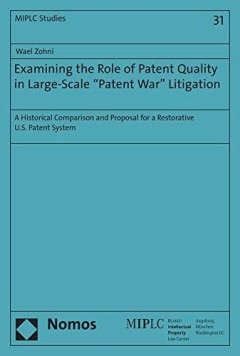
Examining the Role of Patent Quality in Large-Scale "Patent War" Litigation :…
For many Americans the term “patent” is linked to a sense of tradition and cultural icons such as Thomas Edison, inventor of the operational incandescent light bulb. The very image of the light bulb itself has become a symbol for invention or a good idea.¹ Another commonly held notion is that a patent guarantees an individual protection from having his or her idea stolen by unscrupulous co…
- Edition
- 1
- ISBN/ISSN
- 9783845293097
- Collation
- 78 halaman
- Series Title
- -
- Call Number
- 340 ZOH e
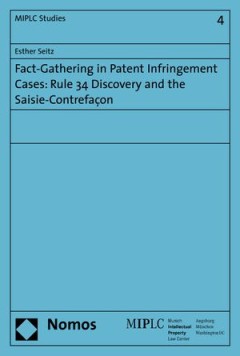
Fact-Gathering in Patent infringement Cases : Rule 34 Discovery and The Saisi…
“Inventions, their exploitation, and the related prior art being inherently scientific and technical in nature, have a proclivity for recordation of information directed to their development, particulars of construction, modification, and application in documents.”¹ In fact, documents, tangible items and processes embody the most vital evidence available for proving patent validity and inf…
- Edition
- 1
- ISBN/ISSN
- 9783845219714
- Collation
- 58 halaman
- Series Title
- -
- Call Number
- 340 SEI f

The Ownership Problems of Overlaps in European Intellectual Property
Intellectual Property rights are expanding and, thus, overlapping more than ever before. This poses challenges to a system devised as comprising a set of isolated compartments, each with its defined purpose.The diverging rules concerning ownership and entitlement can lead to different rights on the same object being owned by different persons. What happens then? This question is addressed under…
- Edition
- 1
- ISBN/ISSN
- 9783845254494
- Collation
- -
- Series Title
- -
- Call Number
- 340 SIL o
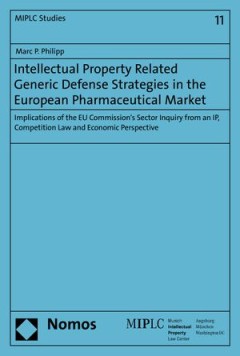
Intellectual Property Related Generic Defense Strategies in the European Phar…
This book discusses the implications of the 2009 EU Commission’s Pharmaceutical Sector Inquiry on originator’s opportunities to apply Intellectual Property related measures in defending against generic competition. It argues that on the one hand recent developments in EU competition law do indeed impose potential limitations on an originator’s ability to block or delay generic market entr…
- Edition
- 1
- ISBN/ISSN
- 9783845231037
- Collation
- 92 halaman
- Series Title
- -
- Call Number
- 340 PHI i

Implementation of the EU Enforcement Directive in the Baltic Countries : Expe…
How did the implementation of the EU Enforcement Directive on IP rights, which was adopted just before the expansion of the EU in May 2004, affect new EU Member States? This monograph is focused on three Baltic countries (Lithuania, Latvia and Estonia) and is aimed to present the collected information on the most relevant historic, social, economic and legal factors of those countries and to ex…
- Edition
- 1
- ISBN/ISSN
- 9783845226934
- Collation
- -
- Series Title
- -
- Call Number
- 340 JAN i
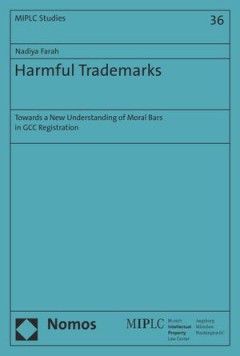
Harmful Trademarks : Towards a New Understanding of Moral Bars in GCC Registr…
Ever since a legal concept of ‘trademark’ began to emerge after 1860,2 the law regulating trademarks has often been asked to define the contours of this ‘brand’ of property right. Modern day developments continue to raise the issue of the boundaries of trademark rights and the influence of signs and symbols on society. Terrorist attacks, political upheaval, revolutions, changing so…
- Edition
- 1
- ISBN/ISSN
- 9783845294568
- Collation
- -
- Series Title
- Law / Commercial
- Call Number
- 340 FAR h
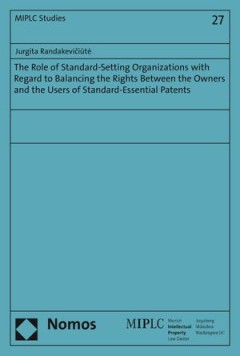
The Role of Standard-Setting Organizations with Regard to Balancing the Right…
This book is the result of a Master thesis written between June and early September 2014. Since then, while preparing this version, minor corrections and updates have been made. This work covers a dynamic and fascinating field of intellectual property and competition law, i.e. standardization, which I became interested in during my LL.M. studies at MIPLC. In the process of writing this thesi…
- Edition
- -
- ISBN/ISSN
- 9783845264271
- Collation
- 66 halaman
- Series Title
- -
- Call Number
- 340 RAN r

The Scope and Limits of Protection for Distinctive Signs against the Communit…
The Community system of design protection,¹ proved to be appealing for the Internal Market participants.² Its power of attraction owes largely to the fact that it grants a fast and cheap protection for a relatively long period of time. Fast, because the registered Community design does not undergo a substantive examination upon registration³ and the unregistered Community design does not req…
- Edition
- -
- ISBN/ISSN
- 9783845243856
- Collation
- 82 halaman
- Series Title
- -
- Call Number
- 340 halaman
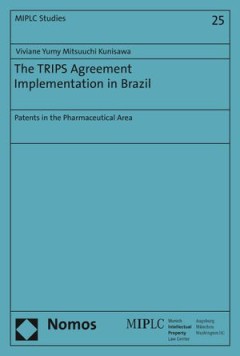
The TRIPS Agreement Implementation in Brazil : Patents in the Pharmaceutical …
Brazil’s insertion into the World Trade Organization (WTO) has stimulated economic growth, as the country has been benefiting from lower trade barriers. The country has accepted the Agreement on Trade-Related Aspects of Intellectual Property Rights (TRIPS) – Annex 1C of the WTO agreement – which sets out minimum standards of protection for Intellectual Property (IP) rights. Law No. 9,279,…
- Edition
- -
- ISBN/ISSN
- 9783845259628
- Collation
- 274 halaman
- Series Title
- -
- Call Number
- 340 KUN t
 Computer Science, Information & General Works
Computer Science, Information & General Works  Philosophy & Psychology
Philosophy & Psychology  Religion
Religion  Social Sciences
Social Sciences  Language
Language  Pure Science
Pure Science  Applied Sciences
Applied Sciences  Art & Recreation
Art & Recreation  Literature
Literature  History & Geography
History & Geography